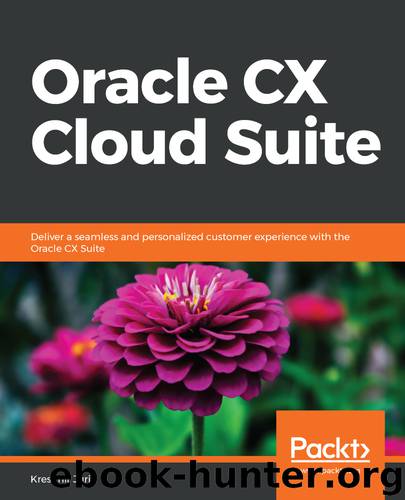Oracle CX Cloud Suite by Kresimir Juric

Author:Kresimir Juric
Language: eng
Format: epub
Tags: COM005030 - COMPUTERS / Enterprise Applications / Business Intelligence Tools, COM005000 - COMPUTERS / Enterprise Applications / General, COM091000 - COMPUTERS / Cloud Computing *
Publisher: Packt Publishing
Published: 2019-03-29T17:03:01+00:00
Scrum
Of all the Agile methodologies, scrum is unique in the empirical control process. This uses the actual project progress assessment and doesn't use project performance forecasts or optimistic estimates. Scrum's projects are divided into short work cycles called sprints, which usually last for one, two or three weeks. At the end of each sprint, stakeholders and team members meet and evaluate the progress of the project and plan the next sprint. In this way, the direction of the project is continually relied on and determined in relation to the work done, and not on speculations and predictions.
It is not difficult to assume that this methodology is popular with project managers and developers, and it would be interesting to find out how popular a project sponsor or senior management is.
Scrum has three basic project roles, which are explained as follows:
Product owner: This is the person responsible for delivering product visibility to the team and representing the customer's interest by defining product and priority requirements. This role comes with a lot of responsibility, and therefore this person has the highest authority. They are held responsible if the project fails, or if it does not meet customer expectations. The owner's biggest problem is finding the right level of involvement in the project. On the one hand, the business owner is responsible for the outcome of the project, while on the other hand, too much involvement can lower the team's independence.
Scrum master: This person is the moderator between product owners and team members. They do not manage the team; they remove obstacles that prevent the team from reaching its goals. In short, the scrum master helps the team to stay creative and productive, ensures that the work is done properly, and is clear to the owner of the product at the same time.
Team member: A team member is responsible for completing the job. According to some recommendations, the ideal number of team members is five to nine different experts. For example, in software projects, a typical team would consist of a developer, a designer, an analyst, a tester, a UI designer, and a database administrator. The team determines how to make a sprint, which gives them plenty of autonomy and freedom to develop, and they are also responsible for fulfilling the goals of the sprint.
Download
This site does not store any files on its server. We only index and link to content provided by other sites. Please contact the content providers to delete copyright contents if any and email us, we'll remove relevant links or contents immediately.
Sass and Compass in Action by Wynn Netherland Nathan Weizenbaum Chris Eppstein Brandon Mathis(7966)
Supercharging Productivity with Trello by Brittany Joiner(7322)
Mastering Tableau 2023 - Fourth Edition by Marleen Meier(7090)
Inkscape by Example by István Szép(6961)
Secrets of the JavaScript Ninja by John Resig Bear Bibeault(6736)
Visualize Complex Processes with Microsoft Visio by David J Parker & Šenaj Lelić(6642)
Build Stunning Real-time VFX with Unreal Engine 5 by Hrishikesh Andurlekar(5669)
Design Made Easy with Inkscape by Christopher Rogers(4994)
Customizing Microsoft Teams by Gopi Kondameda(4535)
Business Intelligence Career Master Plan by Eduardo Chavez & Danny Moncada(4434)
Extending Microsoft Power Apps with Power Apps Component Framework by Danish Naglekar(4148)
Salesforce Platform Enterprise Architecture - Fourth Edition by Andrew Fawcett(4010)
Linux Device Driver Development Cookbook by Rodolfo Giometti(4008)
Pandas Cookbook by Theodore Petrou(4000)
The Tableau Workshop by Sumit Gupta Sylvester Pinto Shweta Sankhe-Savale JC Gillet and Kenneth Michael Cherven(3814)
Exploring Microsoft Excel's Hidden Treasures by David Ringstrom(3288)
TCP IP by Todd Lammle(3117)
Applied Predictive Modeling by Max Kuhn & Kjell Johnson(3006)
Drawing Shortcuts: Developing Quick Drawing Skills Using Today's Technology by Leggitt Jim(2975)
